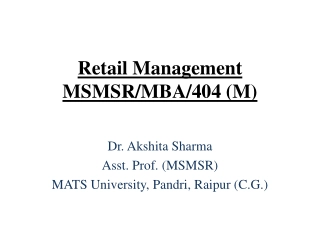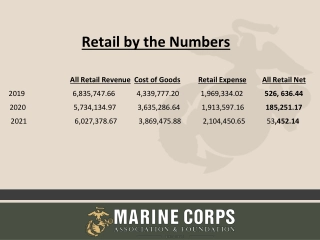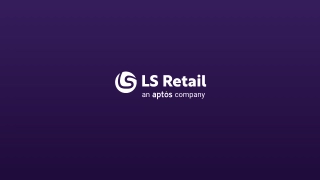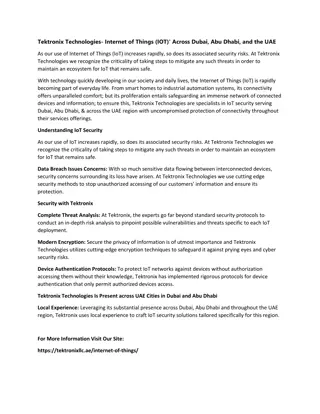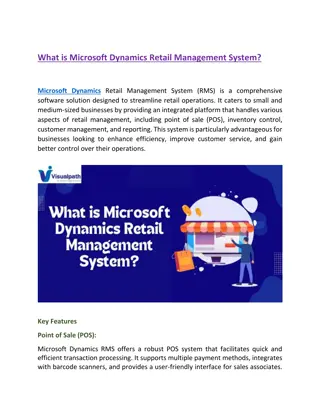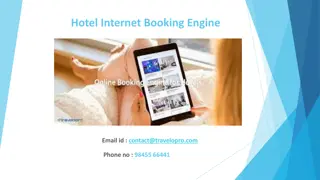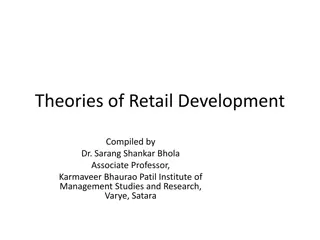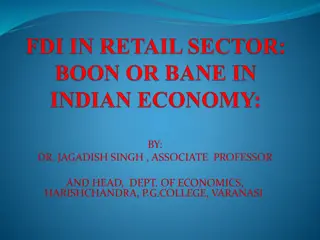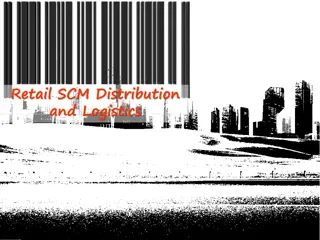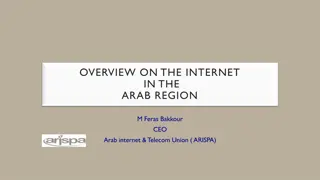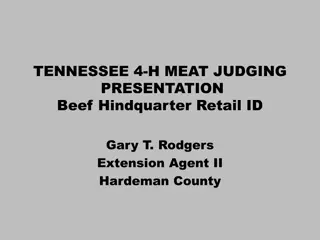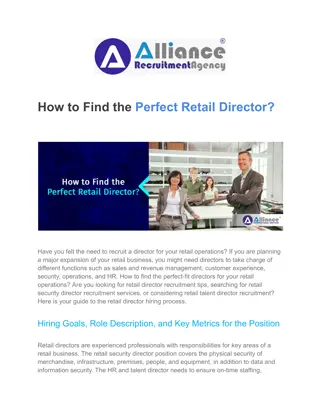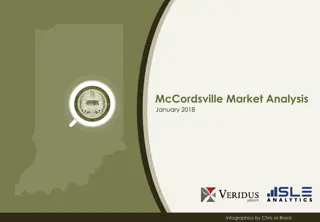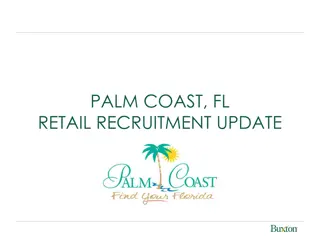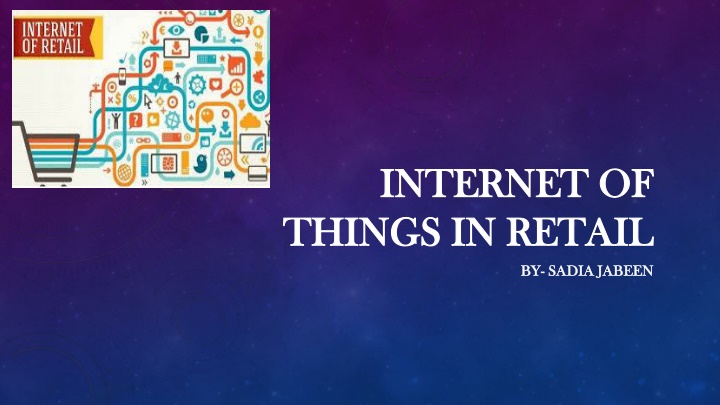
Internet of Things in Retail: Transforming the Shopping Experience
"Discover how the Internet of Things is revolutionizing the retail industry, offering new ways to enhance customer experiences, optimize operations, and drive business growth. Explore the impact of IoT on consumer behavior, inventory management, and competitive advantage in retail. Learn about real-world examples and the opportunities IoT presents in retail operations."
Download Presentation

Please find below an Image/Link to download the presentation.
The content on the website is provided AS IS for your information and personal use only. It may not be sold, licensed, or shared on other websites without obtaining consent from the author. If you encounter any issues during the download, it is possible that the publisher has removed the file from their server.
You are allowed to download the files provided on this website for personal or commercial use, subject to the condition that they are used lawfully. All files are the property of their respective owners.
The content on the website is provided AS IS for your information and personal use only. It may not be sold, licensed, or shared on other websites without obtaining consent from the author.
E N D
Presentation Transcript
INTERNET OF INTERNET OF THINGS IN RETAIL THINGS IN RETAIL BY BY- - SADIA JABEEN SADIA JABEEN
CONTENTS CONTENTS OVERVIEW AND INFLUENCE BREAKDOWN OF ITS RISE WITH EXAMPLE IOT APPLICATION IN REAL WORLD: STATISTICS RETAIL IOT IN USE A PRACTICAL APPLICATION MAIN OPPORTUNITIES OF IOT IN RETAIL RETAIL OPERATIONS IN REAL WORLD ANOTHER EXAMPLE: ComiQ s EnGage PLATFORM FEATURE AND REPRESENTATION TECHNICAL SPECFICATIONS CONCLUSION REFERENCES
OVERVIEW OVERVIEW The Internet of Things (IoT) is causing a wave of disruption across industry and it is the retail industry is poised to ride the crest of that wave. Unlike any other sector, retail has direct contact with one of the largest populations of potential consumers that fully embrace technology and innovation. Retailers need to stay current with the latest technologies to earn the loyalty of the next-generation consumer and capitalize on emerging business opportunities. The Internet of Things is poised to transform the retail industry, virtually eliminating the choice/customization trade-off and redefining sources of competitive advantage. And the return on investment may be more compelling than some retailers appreciate.
THE INFLUENCE THE INFLUENCE IOT is re-shaping the traditional landscape of retail completely. Through the deployment of sensors and the collection and analysis of the data they generate, the IoT opens new avenues to influence and augment actions. While elements of the IoT, such as product-level RFID sensors, have long been used to overcome specific challenges in retail, it is the smaller sensors, omnipresent wireless networks, increased computing power, more sophisticated machine learning makes the IoT poised to have a broader and more transformational impact on business. It helps in giving a certain section of choices which a savvy businessman can implement in his organization and help eliminate the digital divide between the consumer s ever increasing demands and the retailer s ability to deliver.
THE BREAKDOWN OF ITS RISE THE BREAKDOWN OF ITS RISE For most of retailing s history, one important trade-off was driven by the costs and benefits of carrying inventory. Customers made selections from what was available. Providing a higher level of choice meant increased inventory-related costs from sourcing, moving, and holding a larger variety of products. As a result, such retailers required higher margins, achieved through higher prices, to attain a comparable level of profitability as those offering fewer choices. Alternatively, a retailer could provide fewer choices and enjoy lower overall inventory costs, which it could pass along to consumers in the form of lower prices or keep for itself with higher margins.
AN EXAMPLE AN EXAMPLE To see how low-cost and high-choice strategies manifest, consider two prominent retailers: Costco and Target. Costco, representing the low-cost, low-choice approach, carried just 4,000 stock keeping units (SKUs) in 1995.Target, in contrast, had 65,000 unique products in stores the same year, suggesting a high- choice strategy (with correspondingly high inventory costs).
CONTD.. CONTD.. It is worth noticing that none of these solutions is the best way. The Internet effectively broke the cost-choice limitation in the supply chain, contributing to the rise of omnichannel models, and even more fundamentally, blurring the line between digital and traditional retail. No longer is the customer limited for choices, with the option to browse online, pick-up in store, or arrange delivery, every store effectively carries the products of the entire network. Now retailers can offer cheap with choice: the broadest range of products offered at the lowest possible price a true innovation.
IOT IOT APPLICATION IN REAL WORLD: AN APPLICATION IN REAL WORLD: AN EXAMPLE EXAMPLE At Zara, clothing for each store is ordered and delivered twice per week, and only 50 percent of its designs for each season are finalized ahead of time (versus 80 percent at traditional clothiers). Zara headquarters consolidates customer feedback from across the globe, assesses patterns, and makes changes to clothing designs in as little as two weeks a feat only possible thanks to the scale, scope, and speed of data transmitted via the Internet. Customers can now get the latest fashions at lower prices.
THE SOLUTION THE SOLUTION With the IoT, data that were either costly to collect or completely beyond reach can now be generated, collected, analyzed, and acted upon autonomously. For retailers, the growth of data at scale on specific customers and their habits and preferences, in particular, is enabled by the IoT. Coupled with new dimensions of information, such as a user s location, and advanced analytics and artificial intelligence, retailers can guide consumers through a seemingly bewildering array of choices to the precise items they want, thus solving the paradox of choice.
RETAIL RETAIL IOT IOT IN USE IN USE Retailing giant Walmart heavily uses big data for consumer insights and store-level merchandising. The company mines social media trends to showcase types of products that are rising in popularity, and local weather data is compared against historical sales data to boost grocery sales. Nordstrom tracks pins on Pinterest to see what products are trending, and uses that on signs in-store to show shoppers what interests their peers. Disney has RFID-enabled MagicBand wristbands that provide theme park access, entry access for guest hotel rooms, and cash and card-free payment food and merchandise. All that activity is also tracked data that helps build a better picture of how guests use Disney services. Online retailing giant Amazon is once again disrupting bricks and mortar retailing with the Dash Button, a WiFi enabled device that is mapped to specific consumer packaged goods products like laundry detergent. Stuck to a washing machine, all a consumer needs to do when the current supply is running low is tap the button and that generates an order, transaction and delivery of a fresh supply of detergent.
PRACTICAL APPLICATION: ACCENTURE PRACTICAL APPLICATION: ACCENTURE STRATEGY STRATEGY
MAIN OPPORTUNITIES OF MAIN OPPORTUNITIES OF IOT IOT IN RETAIL IN RETAIL REVENUE STREAMS CUSTOMER EXPERIENCE Customers wear wearable devices to quickly scan and call up product info. They receive personalized digital coupons upon entering the store. Customers use robots with touchscreen for browsing inventory that leads the customer to the desired product. SUPPLY CHAIN Smart shelves in store in store which detect when the inventory is low. Smart price tags that can be changed in real time. With aconnected pantry basic inventory arrives when needed. Smart robots will aid in areas ranging from stock replenishment to product assembly to handling hazardous inventory. Smart packing that monitors age of goods or perishable ones.
MAKING THIS INTO REALITY MAKING THIS INTO REALITY 1. Organization 2. Technology One of the most important pieces of driving the IoT-enabled agenda is ensuring that the right culture, organizational structure, governance and talent exist within the company. Business and IT leadership must work together to identify opportunities to leverage technology and ensure a strong partnership between IT and the business, empowered by executive leadership, to rapidly bring new ideas and solutions to market. A foundation of technical capabilities is critical to enable the IoT agenda. IT teams will need to build off of existing investments in key areas such as big data/analytics, in-store technology infrastructures and internal and customer- facing applications to take advantage of the wealth of data generated by IoT devices, while ensuring that the proper connectivity and security foundations are in place to support IoT-enabled initiatives.
KEY ORGANIZATIONAL ELEMENTS KEY ORGANIZATIONAL ELEMENTS REQUIRED FOR REQUIRED FOR IOT IOT SUCCESS SUCCESS A clear understanding of the business strategy to confirm that IoT- enabled solutions are consistent with business strategy. An approach that prioritizes the impact and potential benefits of IoT investments around customer needs. Alignment between IT and operations, marketing, supply chain and other business stakeholders to confirm that IoT-enabled solutions are designed and implemented with business needs in mind. A willingness to rapidly test and fail in order to find the right mix of solutions and capabilities.
FOUNDATIONAL TECHNOLOGY CAPABILITIES FOUNDATIONAL TECHNOLOGY CAPABILITIES REQUIRED FOR REQUIRED FOR IOT IOT SUCCESS SUCCESS Compatibility and use of existing data warehouses and database solutions for IoT applications. On-premise and proprietary data management vs. cloud solutions to support IoT analytics. Middleware solutions and data interchanges that optimize speed of queries for real-time analytics. In-memory computing
RETAIL OPERATIONS IN REAL WORLD RETAIL OPERATIONS IN REAL WORLD
ANOTHER EXAMPLE: ANOTHER EXAMPLE: COMIQ S PLATFORM PLATFORM COMIQ S ENGAGE ENGAGE ComQi s EnGage CMS is already deployed by top retailers and food service brands. It uses the concepts of drive customer loyalty and revenue, reinforce brands, cross-sell and up-sell in stores, enable real time product promotion etc. The basic concept here is trillions of devices are connected and deployed. It is these devices which can send data that can then be rolled up and analyzed to provide rich, invaluable insights about activity and status. A motion sensor or security camera located at the gateway to a dressing room triggers a notice to portable devices carried by sales associates, or at a service counter. The sensor has logged someone standing there for more than, say, 10 seconds, so help is dispatched and shoppers get a better experience.
FEATURES OF FEATURES OF COMQI S COMQI S ENGAGE ENGAGE ComQi s EnGage is a mature, cloud-based content management platform designed to support smart integration with in-store devices, including those doing digital signage, transactional systems, in-store mobile, beacons, analytics and more. EnGage is already in use by top retail banners globally, including Gap, H&M, McDonald s, and Victoria s Secret. Built for rapid scale with an extensive API for development and integration, ComQi enables retail technology partners to rapidly extend new services to their customer base without opening costly, time-consuming new development projects. The EnGage platform reflects more than a decade of research, development and real-world experience. ComQi s first generation platform was among the first in the digital signage industry to introduce and leverage web services, deliver solutions on a software as a service (SaaS) basis, and focus heavily on mission- critical remote device management. Its roots in data-driven content also trace back more than a decade, applying meta data to all aspects of its workflow, long before the rest of the market.
REPRESENTATION REPRESENTATION
TECHNICAL SPECIFICATIONS TECHNICAL SPECIFICATIONS EnGage is designed with multiple points of extension and integration. On the server side, the data feed subsystem can pull data from a variety of sources, or have data pushed into it. A hybrid SOAP(Simple object access protocol) and REST(representational state transfer) API provide extensive means to command and control the system. The EnGage Player is a highly extensible and robust end-point. Built using Linux, these rugged, reliable devices act as data integration points, fetching and transforming data from other systems. Via the local player REST API, data and events can be published to the device in real-time. The player s extensive scheduling and programming capabilities enable it to perform a broad range of playback and control functions within the store.
CONCLUSION CONCLUSION Our own thinking on the Internet of Things in retail continues to evolve, and we expect to share additional perspectives in the coming months. But one thing seems clear: Companies able to address the thorny problems the IoT poses around data management, privacy, analytics, and other areas will likely be well-positioned to separate themselves from competitors. To truly build value from IoT investments, retailers should be expansive in their thinking, considering innovative applications and the use of supporting technologies, such as augmented intelligence.
REFERENCES REFERENCES CONTENT IMAGES http://www.comqi.com/internet-things-reinventing-retail/ http://oncloudone.com/industries/retail-distribution/ http://www.forbes.com/sites/oracle/2015/01/09/how-the-internet-of- things-will-shake-up-retail-in-2015/#7df370a42933 http://www.sprosty.net/internet-things-iot-disrupts-retail-channels- retailers-winning-private-label/ https://www.sap.com/bin/sapcom/en_us/downloadasset.2014-09-sep-11- 18.the-ceo-perspective-internet-of-things-for-retail--top-priorities-to-build-a- successful-strategy-pdf.html https://www.iotuniversity.com/2016/02/internet-of-things-iot-in-retail- impact-is-real-and-set-to-take-off/ http://www.comqi.com/internet-things-reinventing-retail/ https://www.accenture.com/us-en/insight-internet-things-revolutionizing- retail-industry.aspx http://dupress.com/articles/internet-of-things-iot-retail-strategies/ http://ioeassessment.cisco.com/see/ioe-work-retail-0 https://www.accenture.com/us-en/insight-internet-things-revolutionizing- retail-industry.aspx http://www.emarketer.com/Article/How-Internet-of-Things-Making-Retail- Industry-Smarter/1013380 https://www.youtube.com/watch?v=6KkSMnZC3ks https://www.youtube.com/watch?v=OptqxagZDfM&ebc=ANyPxKrzQF3oUQ Gs7-GtH0HZm6vQL2FH3zaIhjDR8NU7lOSvyflBAo1xWwLQwEgf9iWokKm- hldELJeQ0X9K-WcNDY62vOFREg

